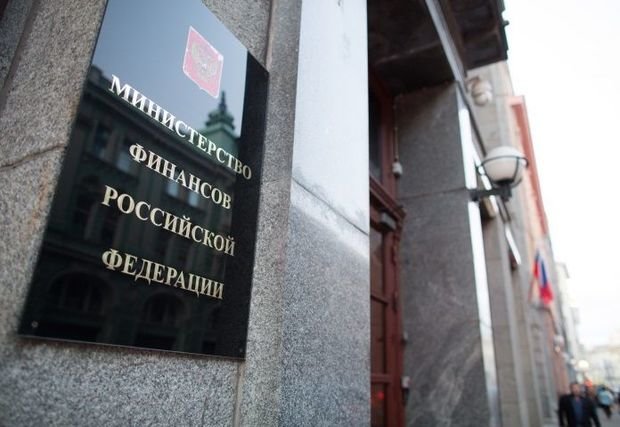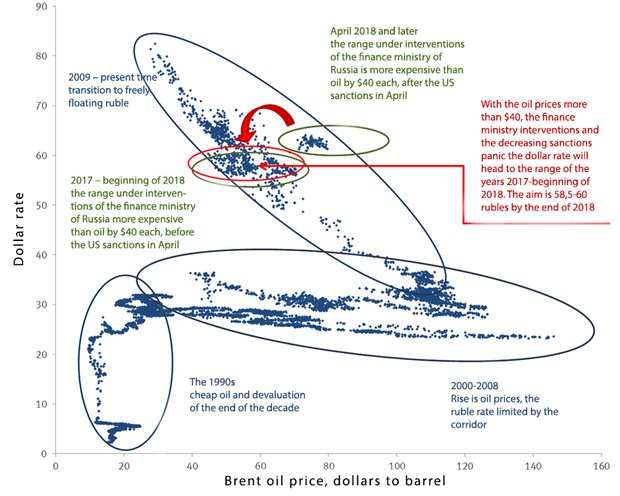'We expect the dollar to drop to 60 rubles by the end of 2018'
The column by Timur Nigmatullin, analyst at Otkritie Broker, on the future of the ruble
What has caused the weakening of the Russian currency from a fundamental point of view? Should we take advantage of the fall for the purchase of the depreciating ruble and ruble-denominated assets? These questions in the author's column, written specially for Realnoe Vremya, are answered by Timur Nigmatullin, analyst at Otkritie Broker.
''Currency panic is a bad compass for those who just want to keep their savings''
At the moment, the US dollar, the most liquid currency on the Moscow Exchange, is quoted near the level of 68 rubles. For comparison, in early 2018 the American national currency cost a little more than 57 rubles. Thus, over the last half of the year the rate increased by 19%.
According to regular surveys of inFOM ordered by the Central Bank of Russia, the devaluation expectations of the population, taking into account the above dynamics, have been at their maximum since the beginning of 2016. In July 2018, 41% of the respondents said that in a year the ruble would weaken against the US dollar and only 6% expected it to strengthen. Given the recent August events that caused the volatility in the currency market, among the interviewed households (the CBR has not yet posted a corresponding report) over the period, apparently, there prevail almost panic sentiments by analogy with the 2014-2015 years.
Currency panic is a good indicator of how high the demand for currency is, but a bad compass for those who want to capitalize on exchange rate fluctuations or just keep their savings. In his column, I will try to explain about what was the cause of the weakening of the national currency from a fundamental point of view, and about whether it is worth to take advantage of the weakening for the purchase of the depreciating ruble and ruble assets now, respectively.

''The balance was broken''
Perhaps we should start with the fact that from a fundamental point of view during all the recent 1,5 years the ruble has actually been not a freely floating currency because of the ''budget rule'' of the ministry of finance. Let me remind you that since the beginning of 2017 the ministry of finance has been almost continuously buying foreign currency from the market for all oil and gas excess revenues coming to the budget. In this case, excess revenue means budget revenue from the sale of raw materials at prices above $40 per barrel. In fact, the actions of the ministry of finance mean that the Russians live at the exchange rate of the ruble corresponding to the level not higher than $40 per barrel of oil. And many additional factors, which weaken or strengthen the national currency, are already included in this rate.
The ruble exchange rate, taking into account the ''budget rule'' of the ministry of finance, but without taking into account the influence of positive or negative external factors, was observed throughout 2017 and the first quarter of 2018. The negative side of the fed rate hike was offset by the inflow of non-residents' funds into ruble assets led by the OFZ of the ministry of finance. The fluctuation range of the dollar/ruble pair was within the range of 55,5-61,0 rubles.
Then the equilibrium was broken. The range of fluctuations of the dollar/ruble shifted from 55,5-61 to 60-65. The spring sanctions by the United States, as well as the tightening of the narrative of the US Central banks and the Eurozone led to the fact that non-residents began to massively withdraw from ruble assets. For example, from the OFZ. From the beginning of 2017 to March 2018, non-residents purchased OFZs at 834 billion rubles, their share among holders of government bonds reached 34,5%. However, by early July they were sold at almost 400 billion rubles.
The second round of sales started in August. The range of fluctuations of the dollar/ruble shifted from 60-65 to, presumably, 65-70.

''The Turkey toxic factor has been added to the reasons for the sale of ruble assets''
On Thursday, August 2, the website of the US Senate published the Republican bill called Defending American Security from Kremlin Aggression Act of 2018. It proposes to introduce a list of restrictions against Russia: on the operations of Russian state banks in the US, on the operations of US residents with the Russian national debt of new issues. It is not planned to impose restrictions on the purchase of raw materials exports, but there is a proposal to recognize Russia as ''a state sponsor of terrorism'', theoretically allowing in the future to exclude the state from the UN Security Council with the prospect of introducing the most stringent sanctions by the Iranian model. The bill will probably try to be considered before November 6 — the date of the elections to the Congress. The chance of adoption is small — less than 10% due to negative reviews of the US Department of the Treasury.
On Wednesday, August 8, the US State Department on its website announced sanctions against Russia basing on Chemical and Biological Weapons Control and Warfare Elimination Act of 1991. Limiting the export of dual-use equipment to Russia and conducting of certain financial transactions are of interest here. Lowering the level of the diplomatic relations, restrictions on flights to the United States, the curtailment of trade relations between the countries to a minimum are also possible. The sanctions with very high probability will come into effect on August 22.
In addition to new sanctions and even tougher narrative of the largest central banks, the reasons for the sale of ruble assets is added with the toxic, including for the global financial system as a whole, factor of Turkey. Such a large developing economy never pursued such irresponsible fiscal, credit and monetary policies before. Even the actions of the Russian authorities in 1998 were more balanced. According to media reports, the ECB is studying the impact of the crisis in Turkey on some European banks. Market players fear a domino effect in the event of a default of the Turkish economy and the development of events by the scenario of the crisis of 1997-1998, which began with South-East Asia, first affected Thailand, then Indonesia, Malaysia and South Korea. Eventually it reached Russia and, having resonated with local budget problems, led to a default. I will not be surprised if at the end of August the OFZ portfolio in the hands of non-residents will be reduced by another 400-500 billion to the levels of the beginning of 2017. Part of the portfolio of non-residents in Sberbank, estimated at about 2 trillion, is also questionable.

We expect that by the end of 2018 the dollar will drop to 58,5-60 rubles. The reasons for the strengthening may be related to the highly probable cancellation of the ministry of finance interventions. From the point of view of the ruble, oil will rise from $40 to $73 per barrel at once. In addition, the sanctions and Turkish risks are too much embedded in the ruble exchange rate and the value of ruble assets.